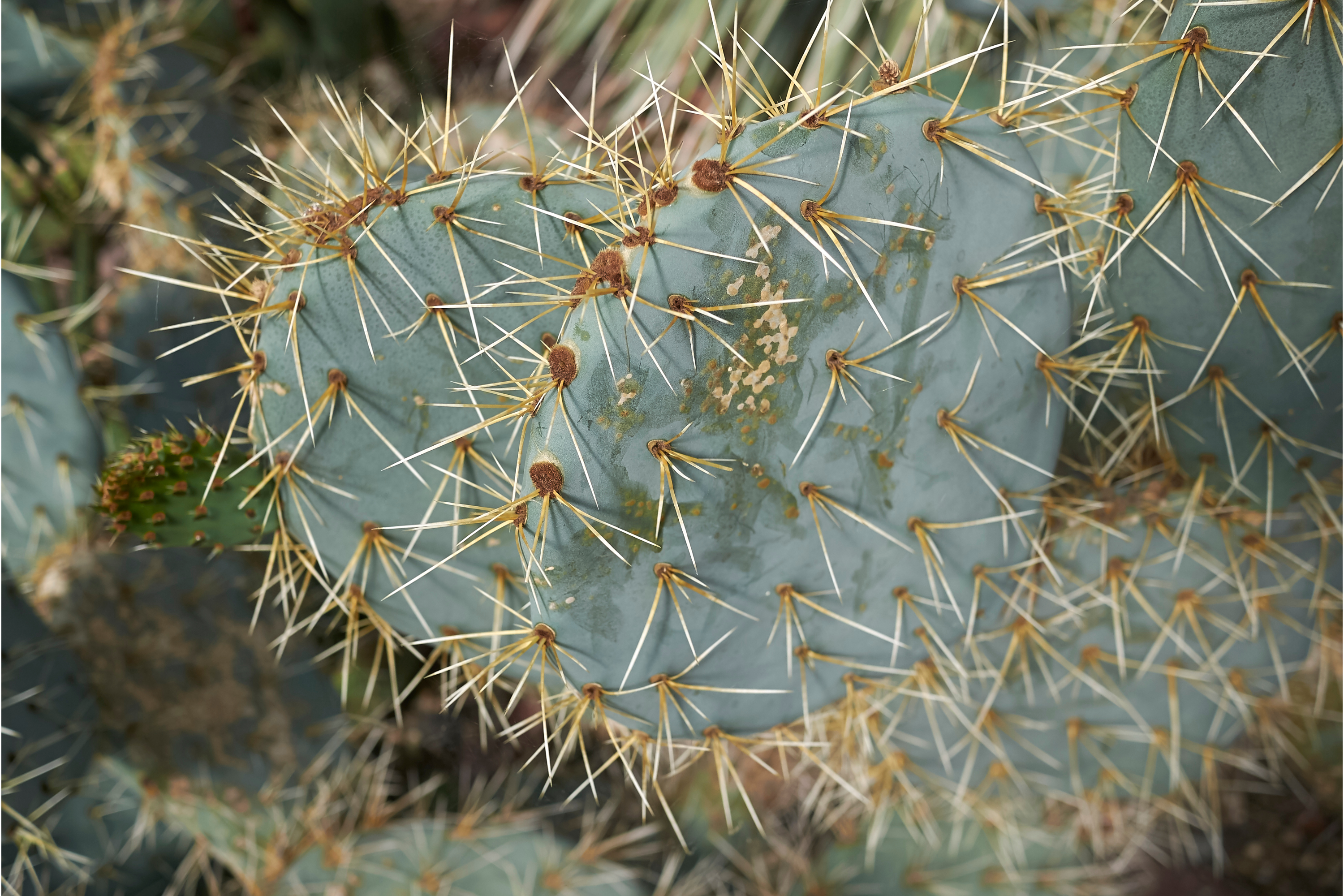Wheel cactus
(Opuntia robusta)

Description
Opuntia robusta, the wheel cactus, nopal tapon, or camuesa, is a species of cactus in the family Cactaceae. It is native and endemic to central and northern Mexico to within 100 miles (160 km) of the Arizona and New Mexico borders where it grow from 5,000 to 10,000 feet (1,500 to 3,000 m) on rocky slopes, open shrub lands, woodlands and mixed with other cactus and succulents. Plants are commonly around 1 m (40 in) high, though they may grow to over 3 m (10 ft) high when supported. The flattened stem segments are fleshy, round and blue-grey in colour. These are up to 30 cm (1 ft) in diameter and have the length of sharp spines up to 5 cm (2 in). Yellow, sessile flowers with a fleshy base are produced on the edges of the upper stem segments. These are followed by barrel-shaped fleshy fruits which are pink or purple and up to 8 cm (3 in) long. Opuntia robusta has populations that are dioecious, hermaphrodite, or trioecious (containing male, female, and hermaphrodite individuals). The species was first formally described in 1837 in Enumeratio Diagnostica Cactearum hucusque Cognitarum. It has naturalised in the states of South Australia, New South Wales, Queensland and Victoria in Australia. Opuntia, commonly called prickly pear or pear cactus, is a genus of flowering plants in the cactus family Cactaceae. Prickly pears are also known as tuna (fruit), sabra, nopal (paddle, plural nopales) from the Nahuatl word nōpalli for the pads, or nostle, from the Nahuatl word nōchtli for the fruit; or paddle cactus. The genus is named for the Ancient Greek city of Opus, where, according to Theophrastus, an edible plant grew and could be propagated by rooting its leaves. The most common culinary species is the Indian fig opuntia (O. ficus-indica). O. ficus-indica is a large, trunk-forming, segmented cactus that may grow to 5–7 m (16–23 ft) with a crown of over 3 m (10 ft) in diameter and a trunk diameter of 1 m (1 yd). Cladodes (large pads) are green to blue-green, bearing few spines up to 2.5 cm (1 in) or may be spineless. Prickly pears typically grow with flat, rounded cladodes (also called platyclades) containing large, smooth, fixed spines and small, hairlike prickles called glochids that readily adhere to skin or hair, then detach from the plant.
Taxonomic tree:







